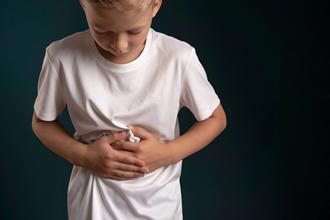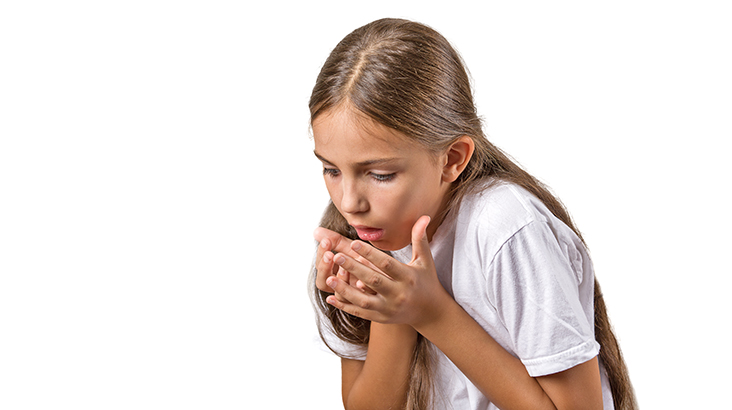
June 6, 2025
The Role of Probiotics in Child Health

आपण पुन्हा गरम केलेला भात खाणे का टाळावे?

As a pediatrician, I often discuss the importance of healthy eating habits with parents. One common food practice in many Indian households is reheating leftover rice. While this seems convenient, it can pose health risks, especially for children, who are more vulnerable to foodborne illnesses. In this article, I will explain why reheated rice can be unsafe and how to handle rice safely for your family.
बालरोगतज्ञ या नात्याने, मी अनेकदा पालकांशी निरोगी खाण्याच्या सवयींच्या महत्त्वावर चर्चा करतो. उरलेला भात पुन्हा गरम करणे ही बऱ्याच भारतीय घरांमध्ये एक सामान्य अन्न पद्धत आहे. हे सोयीस्कर वाटत असले तरी, यामुळे आरोग्यास धोका निर्माण होऊ शकतो, विशेषत: लहान मुलांसाठी, जे अन्नजन्य आजारांना अधिक संवेदनशील असतात. या लेखात, मी पुन्हा गरम केलेला तांदूळ असुरक्षित का असू शकतो आणि तुमच्या कुटुंबासाठी तांदूळ सुरक्षितपणे कसे हाताळायचे ते सांगेन.
Cooked rice can harbor a bacteria called Bacillus cereus. This bacterium is naturally present in soil and grains, including rice. While cooking kills most bacteria, Bacillus cereus spores can survive. When cooked rice is left at room temperature for too long, these spores can germinate, grow, and produce toxins that cause food poisoning.
Children, with their developing immune systems, are particularly susceptible to the effects of these toxins.
शिजवलेल्या तांदळात लपलेला धोका
शिजवलेल्या भातामध्ये बॅसिलस सेरेयस नावाचा जीवाणू असू शकतो. हा जीवाणू तांदळासह माती आणि धान्यांमध्ये नैसर्गिकरित्या असतो. स्वयंपाक करताना बहुतेक जीवाणू नष्ट होतात, बॅसिलस सेरियस बीजाणू जिवंत राहू शकतात. जेव्हा शिजवलेला भात खोलीच्या तपमानावर जास्त काळ सोडला जातो तेव्हा हे बीजाणू अंकुर वाढू शकतात, वाढू शकतात आणि विषारी पदार्थ तयार करू शकतात ज्यामुळे अन्न विषबाधा होते.
मुले, त्यांच्या विकसित रोगप्रतिकारक प्रणालीसह, या विषाच्या प्रभावांना विशेषतः संवेदनाक्षम असतात.
Reheating rice does not always eliminate the toxins produced by Bacillus cereus. If improperly stored, the rice may already contain harmful levels of these toxins, and reheating it only warms the food without making it safe to eat.
Consuming such rice can lead to symptoms of food poisoning, including:
For children, even mild symptoms can lead to dehydration and require medical attention.
तांदूळ पुन्हा गरम केल्यावर काय होते?
तांदूळ पुन्हा गरम केल्याने बॅसिलस सेरियसने निर्माण होणारे विषारी पदार्थ नेहमी बाहेर पडत नाहीत. अयोग्यरित्या साठविल्यास, तांदूळात आधीच या विषाचे हानिकारक स्तर असू शकतात आणि ते पुन्हा गरम केल्याने ते खाण्यास सुरक्षित न होता फक्त गरम होते.
असा भात खाल्ल्याने अन्न विषबाधाची लक्षणे दिसू शकतात, यासह:
* मळमळ
* उलट्या होणे
* अतिसार
* पोटदुखी
लहान मुलांसाठी, अगदी सौम्य लक्षणांमुळे निर्जलीकरण होऊ शकते आणि वैद्यकीय लक्ष आवश्यक आहे.
Here are some practical tips for parents to ensure rice remains safe for your family:
शिजवलेले तांदूळ सुरक्षितपणे कसे हाताळायचे
तांदूळ तुमच्या कुटुंबासाठी सुरक्षित राहील याची खात्री करण्यासाठी पालकांसाठी येथे काही व्यावहारिक टिपा आहेत:
1.जेव्हा शक्य असेल तेव्हा ताजे तांदूळ शिजवा
जेवणासाठी आवश्यक तेवढा भात शिजवणे केव्हाही चांगले. ताजे शिजवलेले तांदूळ हा सर्वात सुरक्षित पर्याय आहे, विशेषतः मुलांसाठी.
2.तांदूळ पटकन थंड करा
तुमच्याकडे उरलेला तांदूळ असल्यास, ते एका उथळ कंटेनरमध्ये स्थानांतरित करा आणि वेगाने थंड करा. एका तासापेक्षा जास्त तपमानावर शिजवलेले तांदूळ सोडू नका.
3.ताबडतोब रेफ्रिजरेट करा
शिजवलेला भात हवाबंद डब्यात रेफ्रिजरेटरमध्ये ठेवा. बॅक्टेरियाची वाढ कमी करण्यासाठी तापमान 5°C पेक्षा कमी असल्याची खात्री करा.
4.6 तासांच्या आत सेवन करा
उरलेला तांदूळ 6 तासांच्या आत वापरा. फ्रिजमध्येही तांदूळ जेवढा जास्त काळ साठवला जातो, तेवढा बॅक्टेरिया वाढण्याचा धोका जास्त असतो.
5.व्यवस्थित पुन्हा गरम करा
तांदूळ पुन्हा गरम करत असल्यास, तो संपूर्ण वाफाळत असल्याची खात्री करा. तांदूळ एकापेक्षा जास्त वेळा गरम करू नका.
6.बाहेरील स्त्रोतांकडून तांदूळ टाळा
रेस्टॉरंट्स किंवा रस्त्याच्या कडेला असलेल्या विक्रेत्यांकडील तांदळाच्या डिशबाबत सावधगिरी बाळगा, कारण तुम्ही त्यांची साठवण आणि पुन्हा गरम करण्याच्या पद्धतींची खात्री करू शकत नाही.
While reheating rice may seem harmless, it can have serious implications for your child’s health if not handled properly. By adopting safe storage and cooking practices, you can ensure that your family enjoys rice without any risk.
Remember, prevention is always better than cure. Healthy food habits are a cornerstone of your child’s well-being. If you have any concerns or notice symptoms of food poisoning in your child, consult a pediatrician immediately.
Stay informed, stay safe!
तांदूळ पुन्हा गरम करणे निरुपद्रवी वाटत असले तरी, योग्य प्रकारे हाताळले नाही तर त्याचा तुमच्या मुलाच्या आरोग्यावर गंभीर परिणाम होऊ शकतो. सुरक्षित स्टोरेज आणि स्वयंपाक पद्धतींचा अवलंब करून, तुम्ही हे सुनिश्चित करू शकता की तुमच्या कुटुंबाला कोणत्याही जोखमीशिवाय भाताचा आनंद घेता येईल. लक्षात ठेवा, उपचारापेक्षा प्रतिबंध नेहमीच चांगला असतो. निरोगी खाण्याच्या सवयी हा तुमच्या मुलाच्या कल्याणाचा आधारस्तंभ आहे. तुम्हाला तुमच्या मुलामध्ये अन्न विषबाधाची कोणतीही चिंता किंवा लक्षणे आढळल्यास, त्वरित बालरोगतज्ञांचा सल्ला घ्या. माहिती द्या, सुरक्षित रहा!
Leave a comment